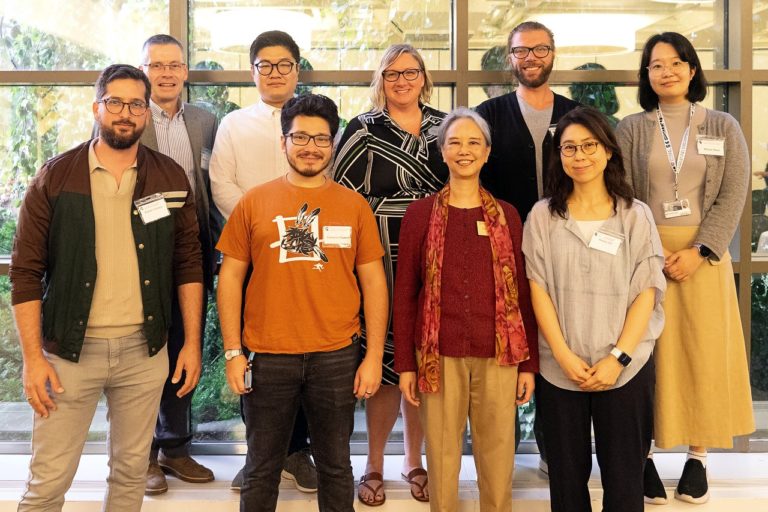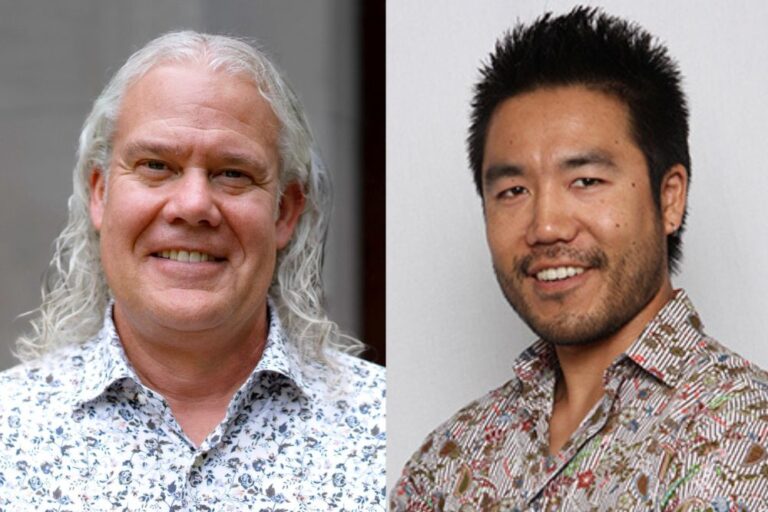Learning materials that utilize technology can quickly become obsolete as technology changes. But Assistant Professor of Russian Shannon Donnally Quinn was determined to rescue a project that was going to cease to function after Adobe Flash was discontinued at the end of 2020. She had worked on the award-winning Russian Advanced Interactive Listening Series (RAILS) project as a graduate student at the University of Wisconsin-Madison, together with Benjamin Rifkin, Dianna Murphy, Victoria Thorstensson, Nina Familiant, and Darya Vassina. From 2003-2006, the project, funded by a federal grant from the U.S. Department of Education International Research and Studies Program, had created a set of 30 lessons based on documentary films and interviews with prominent Russians that aimed to help students move from the Intermediate to the Advanced level in listening proficiency in Russian. Now spread across the world, the team met to decide the fate of the project. “We wanted to preserve these materials for present and future students. Curriculum on the Advanced level is already rare in Russian, so it would really be unfortunate to lose this set of lessons,” said Shannon Quinn.
Led by Quinn, the group decided to move ahead to rescue the project. The University of Wisconsin-Madison provided access to its installation of Pressbooks with H5P, a platform for creating electronic books with interactive elements. The RAILS project had originally been created using a piece of custom software (the Lesson Builder and the Multimedia Annotator) that had been developed at UW-Madison for instructors to create video-based instructional materials. “Fifteen years later, many of the innovative features that that software supported – such as the time-based annotation of streaming video – are now integral features of open-source software tools such as H5P,” says Quinn. While the new versions of the RAILS lessons work in a slightly different way, they can accommodate the functionality of the original version of lessons, and in some cases can do things even better. Together with the help of University of Wisconsin-Madison graduate students Isabella Palange and Lidia Gault, whose work on the project was supported by the UW-Madison Russian Flagship, Shannon Quinn moved the video clips and interactive activities that the lessons are built on to YouTube, Pressbooks, and H5P, which will give a whole new generation of students access to the rich content in them.
“These materials have not lost their relevance in any way. It has been very gratifying to be able to preserve them for the future.”
Shannon Quinn
The lessons are based on short clips from documentary films on topics related to Soviet history directed by Marina Goldovskaya (including the groundbreaking film Solovky Power, which recounts the history of the Soviet Union’s first concentration camp), as well as interviews with Sergei Khrushchev (the son of the former Soviet leader), Veniamin Smekhov (a well-known Russian actor), and Irina Khakamada (a politician who ran for president against Vladimir Putin in 2004), among others. “The lessons themselves have become a part of history, and it is fascinating for today’s students to hear what Irina Khakamada had to say about her run for president against Vladimir Putin in 2004, for example, and examine that in light of what has happened in the years after.”

Dr. Benjamin Rifkin, the principal investigator for the grant that supported the initial development of the RAILS lessons in 2003-2006 at the University of Wisconsin-Madison, now a professor of Russian at Hofstra University, said: “The RAILS lessons, in their first incarnation, received a 5-star rating from MERLOT and an award for the best work in pedagogy from the American Association of Teachers of Slavic and East European Languages based on the ACTFL Proficiency Guidelines for Listening at the Advanced and Superior levels because of the extraordinary curricular design of team members, including Dr. Shannon Quinn. All the members of the initial team were surprised that RAILS remained functional for over a decade despite rapid changes in the way that interactive content was delivered on the Internet. RAILS 2.0, in its new incarnation, would not have been possible without the vision, talent, and dedication of Dr. Quinn, who brought the original team members together across the globe, with new team members, to address issues related to the transition from the Flash-based original platform to the new H5P Pressbooks platform. All of us on the RAILS team are grateful to Dr. Quinn’s leadership on this project and grateful to her, and to Michigan State University’s Department of Linguistics, Languages, and Cultures, for their support in making RAILS 2.0 available to the next generation of learners of Russian.”
The revised set of 30 RAILS lessons is almost complete, and the team hopes to release them in early 2022. “I hope that we may be able to expand on them in the future,” said Quinn. “The richness of the materials would be enhanced if we can incorporate more contemporary perspectives as well.” Quinn also hopes that some of the topics in the lessons can be brought out further. “The lessons include topics like racism and nationalism that have only become more important in recent years. These materials have not lost their relevance in any way. It has been very gratifying to be able to preserve them for the future.”


